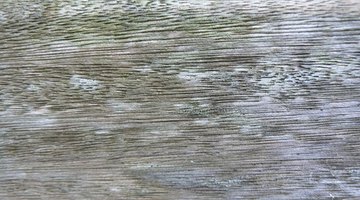Problems With Teak Furniture
Teak, a hardwood from Southeast Asia, has some ideal properties for furniture making. It is extremely hard yet flexible, resilient and has an attractive finish. Its natural oils prevent damage from sun or rain, therefore making it a popular choice for marine uses or for outdoor furniture. Nonetheless, teak wood can still pose a few problems to those considering it for their own furnishings.
Environmental Concerns

Most of the teak wood that produces furniture is grown in Asia and comes from growing practices that raise serious environmental concerns. The majority of teak comes from Indonesia and Myanmar, where it is clear-cut, sometimes thousands of acres at once. Those trees that are not teak are simply burned to the ground. The land is thereafter left subject to erosion or is used for other unsustainable agricultural techniques. When teak is grown in plantations, it's also grown in monocultures, without any other tree species. By growing solely teak trees, local wildlife is left without a sustaining habitat. As long as trees are planted at the same time, monoculture plantations also effectively result in clear-cutting, as well. Those looking to purchase teak furniture grown using environmentally sustainable techniques should look for specialty lines, such as "Reforest Teak," that do not use clear-cutting or monoculture plantation growing.
Aging and Maintenance
Most teak enthusiasts will praise the wood's resilience to the elements. For this very reason, it has been used for generations for marine uses. However, if you treasure teak's golden honey-colored hue, you'll find that the wood quickly loses its color when exposed to the elements. Outdoor teak furniture needs to be cared for regularly, with oil applied once or twice a year, depending on the local weather and humidity level. While teak contains relatively high levels of natural oils to keep it from drying out, its moisture content depends upon the quality of the wood and whether or not it has been kiln-dried. For teak furniture kept in a highly humid place, a high moisture content is acceptable. However, if you will keep the teak in a dry place, then buying lower-quality wood with a higher moisture content will leave it prone to drying out later.
Insects
While teak is generally fairly insect-repellent, thanks to its high oil content, in some cases insects will eat or otherwise harm the wood. Wasps will sometimes take to eating the wood. While unusual, this can occur particularly if there is a high concentration of wasp's nests within a small area, with few other food sources. Barlow Tyrie, a teak furniture manufacturer, produces an insect-repellent finish specifically for this problem called "Wasp Solution," available from them directly.
References
Resources
Writer Bio
Danielle Hill has been writing, editing and translating since 2005. She has contributed to "Globe Pequot" Barcelona travel guide, "Gulfshore Business Magazine," "Connecting Lines: New Poetry from Mexico" and "The Barcelona Review." She has trained in neuro-linguistic programming and holds a Bachelor of Arts in comparative literature and literary translation from Brown University.
Photo Credits
- aged teak image by Alison Bowden from Fotolia.com
More Articles



